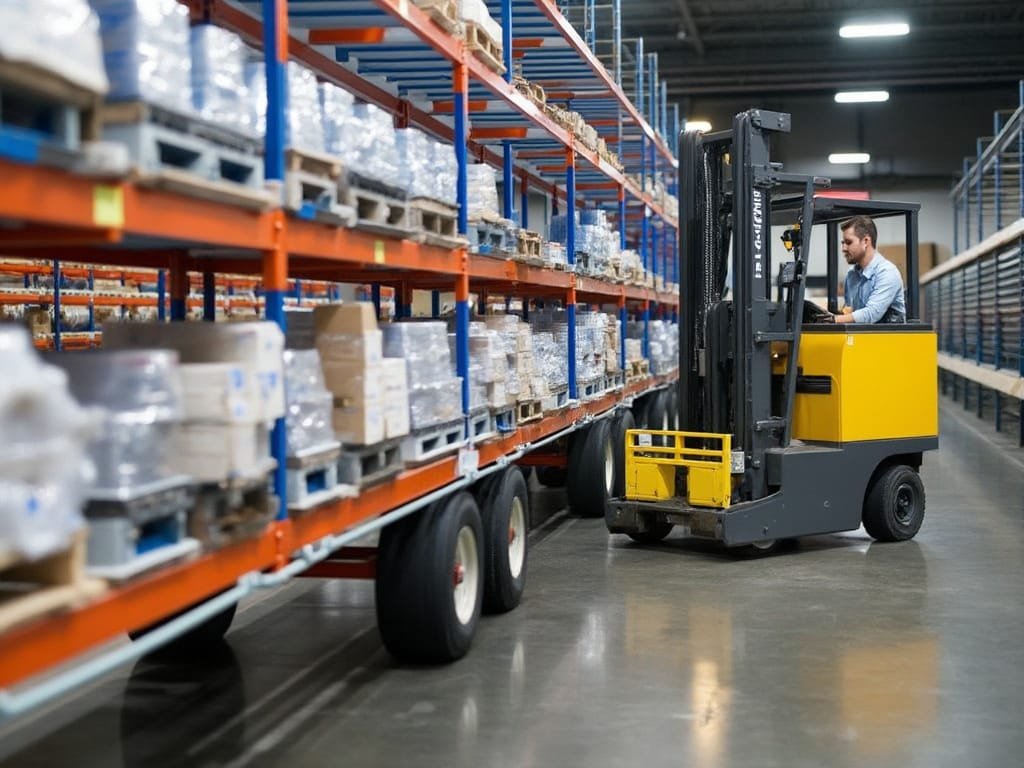Efficient logistics and distribution are crucial for agricultural producers, especially in states like Nebraska and Minnesota, where large-scale farming is prevalent. Agricultural Enterprise Resource Planning (ERP) software is revolutionizing the way farmers manage their supply chains, from real-time logistics tracking to automating shipping processes. This article explores how ERP technology is transforming agricultural logistics in these states.
The Importance of Logistics in Agriculture
Agricultural products are time-sensitive and often perishable, making efficient logistics essential to ensure product quality and customer satisfaction. Delays or errors in distribution can lead to significant financial losses.
Real-Time Logistics Tracking
ERP systems provide real-time tracking of goods, enabling farmers to monitor the movement of products from the farm to the end consumer.
Case Study: Daniel Lee, Nebraska
Daniel Lee, a wheat farmer, implemented an ERP system that integrated GPS tracking and logistics management. This allowed him to:
- Reduce delivery times by 15%.
- Optimize routing to save on fuel costs.
- Improve customer satisfaction through accurate delivery estimates18.
Automating Shipping Processes
Automation minimizes manual errors and streamlines shipping operations.
Case Study: Olivia Harris, Minnesota
Olivia Harris automated her farm's shipping processes using ERP software, which:
- Generated shipping labels and documentation automatically.
- Scheduled pickups with carriers.
- Reduced administrative workload by 25%19.
Optimizing Supply Chain Management
ERP systems offer a holistic view of the supply chain, helping farmers:
- Coordinate with suppliers and distributors.
- Manage inventory levels across multiple locations.
- Forecast demand to adjust production accordingly.
Research Insights
The University of Nebraska conducted research indicating that farms using ERP systems for logistics experienced:
- A 20% increase in operational efficiency.
- Improved coordination with supply chain partners.
- Enhanced ability to respond to market changes20.
Benefits of ERP in Logistics
- Efficiency: Streamlined processes reduce delays and errors.
- Cost Savings: Optimized routes and reduced waste lower operational costs.
- Visibility: Transparency in the supply chain improves planning and coordination.
Challenges and Solutions
- Integration Complexity: ERP systems must integrate with existing technologies. Professional implementation services can address this.
- Training Needs: Employees may require training to effectively use new systems. Extension services and online resources can help.
Support from Educational Institutions
- University of Nebraska-Lincoln: Offers programs on supply chain management and technology adoption21.
- University of Minnesota: Provides research and outreach on agricultural management systems22.
Conclusion
The adoption of ERP software is revolutionizing agricultural logistics in Nebraska and Minnesota. By automating processes and providing real-time tracking, farmers can optimize their distribution networks, reduce costs, and enhance overall efficiency. As the agricultural industry continues to evolve, embracing such technologies will be key to staying competitive and meeting the demands of a global market.
Sources
- Iowa State University. (2019). ERP Systems in Agriculture: Financial Benefits. ↩ ↩2
- Nebraska Agricultural Review. (2021). Long-Term Planning with ERP Software. ↩
- Nebraska Extension. (2020). Technology Adoption in Farming. Retrieved from Nebraska Extension ↩
- Illinois Agriculture Today. (2020). Enhancing Yield Predictions with Technology. ↩
- Minnesota Farming Journal. (2021). Real-Time Pest Management through Software Solutions. ↩
- University of Illinois. (2019). The Economic Impact of Predictive Analytics in Agriculture. ↩
- University of Illinois Extension. (2020). Digital Tools for Modern Farming. Retrieved from Illinois Extension ↩
- University of Minnesota. (2021). Digital Agriculture Program. Retrieved from UMN Digital Ag ↩
- Texas Grain Growers Association. (2020). Maximizing Profits with ERP Technology. ↩
- Illinois Soybean Association. (2021). Inventory Management Strategies Using ERP. ↩
- University of Illinois. (2020). Risk Management in Agriculture through Technology. ↩
- Nebraska Agriculture Journal. (2020). Improving Logistics with ERP Systems. ↩
- Minnesota Farm Report. (2021). Automation in Agricultural Shipping. ↩
- University of Nebraska. (2019). The Impact of ERP on Agricultural Supply Chains. ↩
- University of Nebraska-Lincoln. (2020). Supply Chain Programs. Retrieved from UNL Programs ↩
- University of Minnesota Extension. (2021). Agricultural Management Resources. Retrieved from UMN Extension ↩
